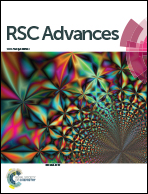A new strategy to tailor the structure of sustainable 3D hierarchical porous N-self-doped carbons from renewable biomass for high-performance supercapacitors and CO2 capture†
Abstract
Hierarchical porous N-doped carbons show great potential applications in energy storage and CO2 capture. Renewable biomass chitosan, which is abundant and simultaneously contains large amounts of N and C, is an ideal alternative to fossil resources for sustainable and scale-up production of cost-effective N-self-doped carbons. In this work, we employed a new and effective strategy to obtain 3D hierarchical porous N-self-doped carbons from chitosan. The hierarchical porous structure of the N-self-doped carbons could be easily tailored to obtain nanorod interconnected and fiber-wall interconnected architectures without using any porogen, catalyst or activator. The nanorod interconnected porous carbon displayed a high specific surface area of 1408 m2 g−1 while the fiber-wall interconnected porous carbon exhibited an excellent specific capacitance of 261 F g−1 (0.5 A g−1) due to the desirable hierarchical framework. In addition, these hierarchical porous carbons had a good CO2 capture performance (3.07–3.44 mmol g−1 at 25 °C). This unique method is supposed to be a new strategy to create novel 3D hierarchical porous carbons for promising applications in supercapacitors, lithium ion batteries, fuel cells and sorbents.


 Please wait while we load your content...
Please wait while we load your content...